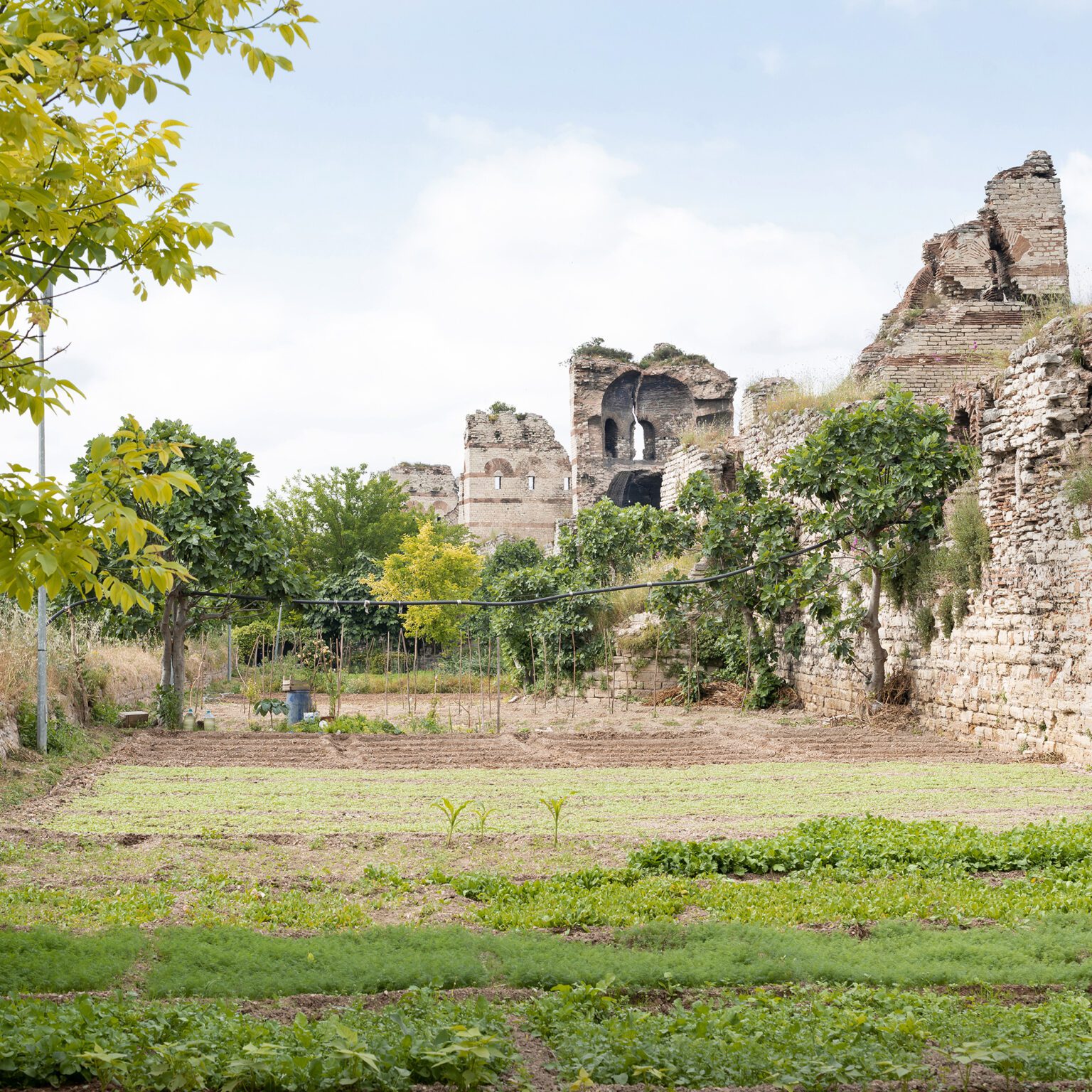İSTANBUL SURLARI – The Land Walls of Istanbul
Photographs by Domenico Ventura
“I know of no other place in the East where the greatness of human endeavour, the majesty of power, the glory of the centuries, the solemnity of memories, the mournfulness of ruins, the beauty of nature are so brought together. It is a sight that inspires at once admiration, veneration and terror; a sight worthy of a song by Homer.” (Edmondo De Amicis, 1874)
In the context of the 24th International Congress of Byzantine Studies in Venice and Padua, the Photographic Collection presents an online exhibition by photographer Domenico Ventura on the Land Walls of Constantinople. Originally, the exhibition was due to be shown on site at the Bibliotheca Hertziana in March 2020 and accompanied by a workshop with Neslihan Asutay-Effenberger, Silvia Pedone, Silvia Ronchey and Aleksandar Shopov. Invitations had already been printed, but the Covid-19 outbreak prevented both events from taking place.
Introduction
The Land Walls of Constantinople, built by emperor Theodosius II at the beginning of the fifth century, are – with the Aurelian Walls of Rome – the largest preserved city walls of antiquity. For centuries they protected the capital of the Byzantine, and then of the Ottoman Empire, from external attacks. Although they are the most impressive surviving work of late Roman military architecture, the tourist crowds in modern Istanbul rarely visit this extraordinary monument.
Domenico Ventura has walked the walls from the Golden Horn to the Sea of Marmara with his camera several times since 2009, accompanied by the chronicles of the conquest of the city in 1453 as well as the travel reports by Edmondo de Amicis from 1874. This exhibition aims to explore the monument in the context of a city that is undergoing a rapid modernization process while being visibly in touch with its past. The photographs also focus on the transitions between the urban space and rural areas: In fact, the ancient gardens cultivated by the “inhabitants of the walls” are still preserved as one of the oldest historical cultivated landscapes in the Mediterranean, but they are seriously endangered by modern urban planning. Mixing, reshaping and abandonment determine the selection of images with a strong documentary character. Are the walls an obstacle to change, or rather a symbol of the constantly changing relationship between the city and its people?

The Photographer
After graduating in History of Medieval Art, Ventura specialized in the photographic documentation of works of art, carrying out photographic campaigns for scientific publications, exhibition catalogues, restoration sites and archaeological excavations in Italy and abroad. He worked e.g. in the Galleria Borghese in Rome, the Vatican Museums, the Castello Sforzesco in Milan, the Archaeological Park in Pompeii, the Papal Palace in Avignon, the Open Air Museum in Göreme (Cappadocia), the Archaeological Museum of Istanbul, the Monastery of Deir Mar Musa al Habasci (Damascus). In his own projects he also focuses on documentary photography projects and has participated in various exhibitions.
Bibliography
Neslihan Asutay-Effenberger, Die Landmauer von Konstantinopel – İstanbul. Historisch-topographische und baugeschichtliche Untersuchungen, Berlin e.a. 2007 (Millennium-Studien, 18). DOI: https://doi.org/10.1515/9783110203998
Aleksandar Shopov, “When Istanbul Was a City of Bostāns. Urban Agriculture and Agriculturists”, in A Companion to Early Modern Istanbul, ed. Shirine Hamadeh, Çiğdem Kafescioğlu, Leiden/Boston 2021 (Brill’s Companions to European History, 26), S. 279–307. DOI: https://doi.org/10.1163/9789004468566_012
Imprint
Project Tatjana Bartsch, Johannes Röll, Domenico Ventura
Photographs Domenico Ventura
Texts Tatjana Bartsch, Johannes Röll, Domenico Ventura
Assistance Francesca Denora
Implementation Tatjana Bartsch
Disclaimer All photographs and other content on this site are the property of the named authors (copyright holders) and are protected by applicable national and international law. They may not – except within the legal limits of copyright – be reproduced, distributed, published or made available to the public, either in whole or in part. Use without express, prior, written confirmation is not permitted. Also, any publication of a modification of the photographs without prior consent is prohibited. The authors have a legal right to acknowledge their authorship of the work by affixing a copyright notice. Downloads and copies of the contents and photographs on this site are only permitted for private, non-commercial use.
August 22, 2022







